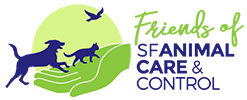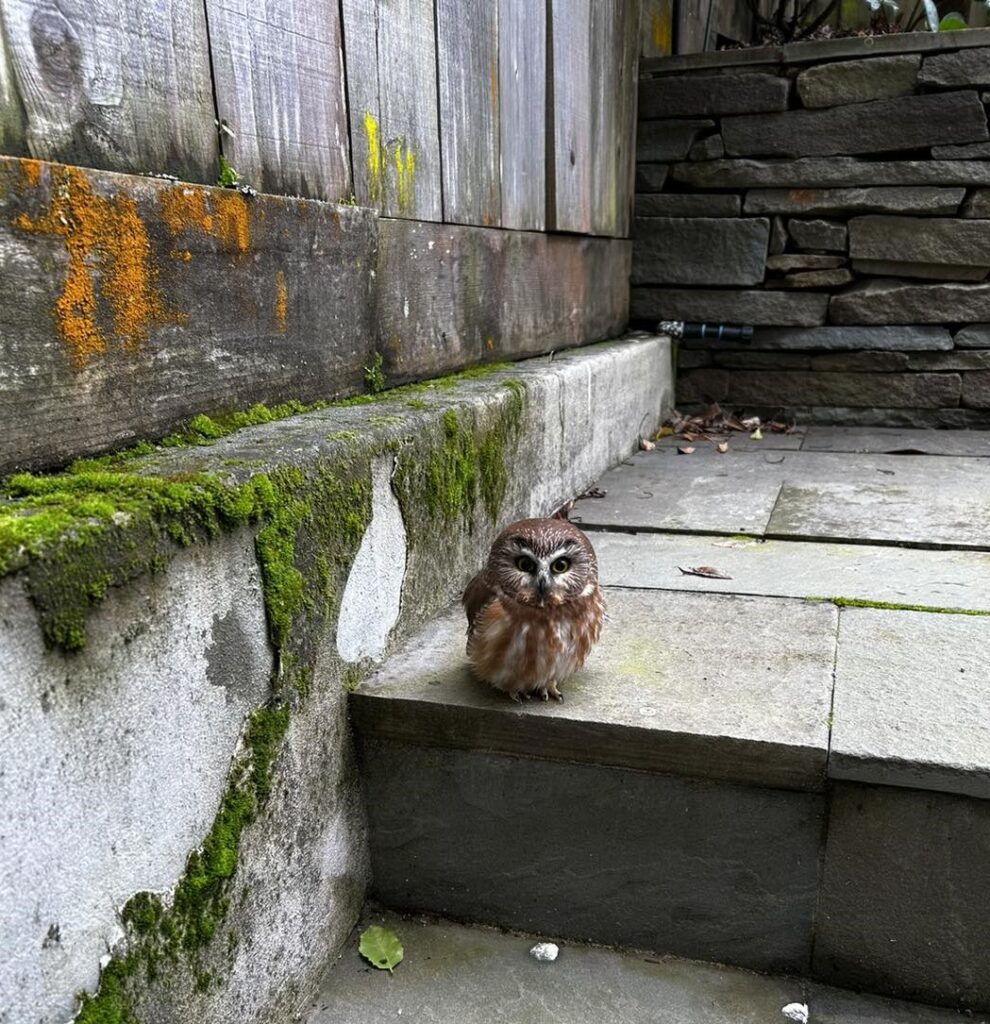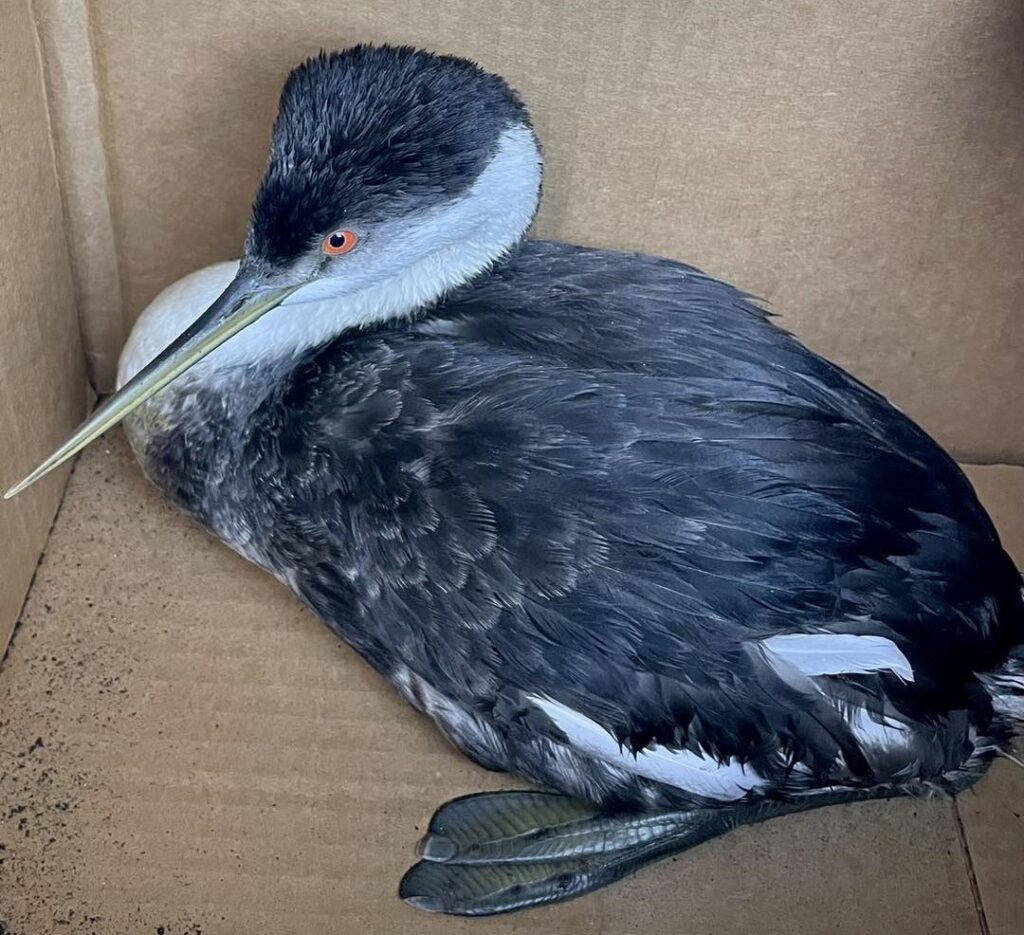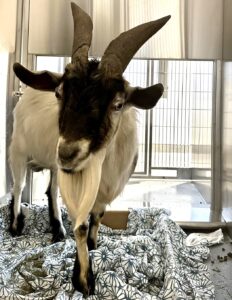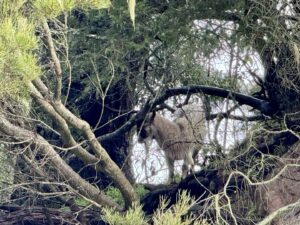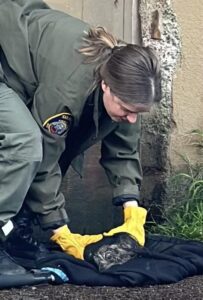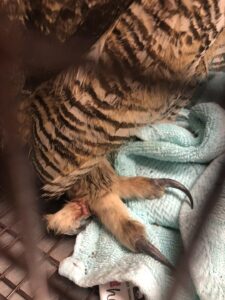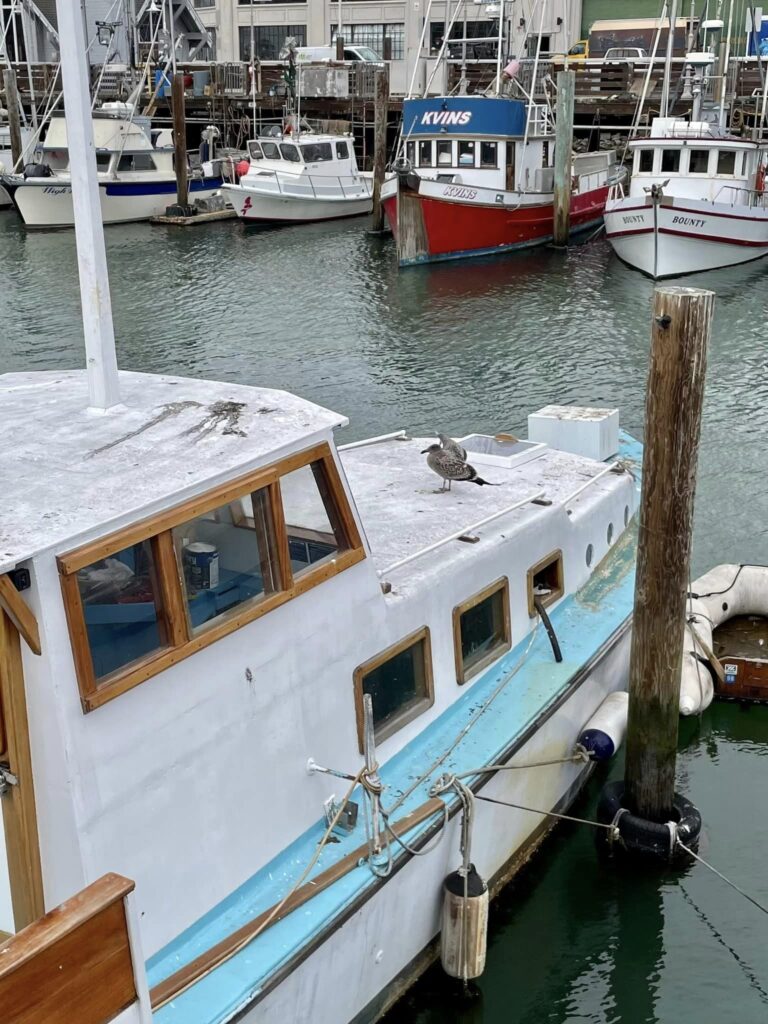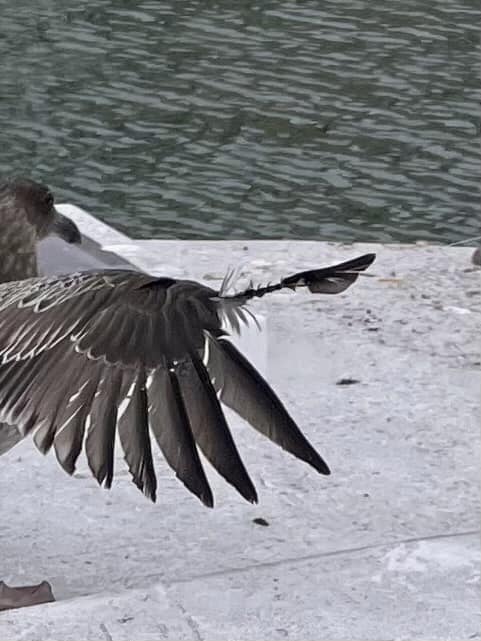Earlier this week I was working at dispatch when I received a call from a concerned homeowner about a small baby owl in her back yard that was not flying away when approached and had been there for a few hours. She was afraid that the owl might be sick or injured. Since we needed her to be home to access the backyard, I asked if she would be home for a bit while I found an officer to go out there and she told me that she would stay home as long as it takes to ensure that the owl was cared for. I sent Lieutenant Ryer out to get a closer look at the owl’s condition. Lt. Ryer arrived on scene and met with the homeowner who brought her into the backyard to see the small owl that taken up residency on her back steps. Due to the small size, it was first thought to be a baby owl, but upon closer inspection the owl appeared to be an adult Northern Saw-whet owl (and anecdotally one of the cutest owls ever).
 Wearing her protective bite gloves, Lt. Ryer used a large towel and slowly approached the owl. Using the towel, she was able to gently grab the owl and place the bird in a transport box. Once in the box, she was able to get a better look at the bird, who appeared to be hopping around well and had no apparent injury. These birds are mainly nocturnal and so it was a bit strange to find one during the day just sitting on the ground. After communicating via text with our partners at Peninsula Humane Society Wildlife Care Center in Burlingame, they thought it was best to bring the bird to them for a closer evaluation.
Wearing her protective bite gloves, Lt. Ryer used a large towel and slowly approached the owl. Using the towel, she was able to gently grab the owl and place the bird in a transport box. Once in the box, she was able to get a better look at the bird, who appeared to be hopping around well and had no apparent injury. These birds are mainly nocturnal and so it was a bit strange to find one during the day just sitting on the ground. After communicating via text with our partners at Peninsula Humane Society Wildlife Care Center in Burlingame, they thought it was best to bring the bird to them for a closer evaluation.
Northern Saw-whet owls are mainly active at late dusk and through the night, they have excellent low-light vision and can easily find prey in the darkness of night. Its defense upon discovery is to sit still and not fly, this behavior leads people to perceive these owls as “tame” and was possibly the behavior that we witnessed in the homeowner’s backyard.
During breeding season males give a rhythmic tooting song that can go on for hours without a break. The bird was named for this song which resembles the sound of a saw being sharpened on a whetting stone. The female Northern Saw-whet owl does all of the incubation and brooding, while the male hunts and brings back food for all to eat. When the youngest nestling is about 18 days old, the female leaves the nest to roost elsewhere. The male continues to bring food for another month and the older nestlings will help to feed their younger siblings. They are one of the smallest owls in North America and can be similar in size to an American Robin.
The owl was brought back to SFACC where we put a call out to our dedicated transport volunteers to help bring this adorable owl to get wonderful care he deserved with our amazing rescue partners at PHS Wildlife Center. We are always in need of more people who are available to help us transport creatures of all shapes and sizes to our rescue partners. Please reach out to us on our website and see how you can become a transport volunteer. If you see wildlife in need of our care, please call SFACC dispatch at 415-554-9400 to speak with one of our officers.
